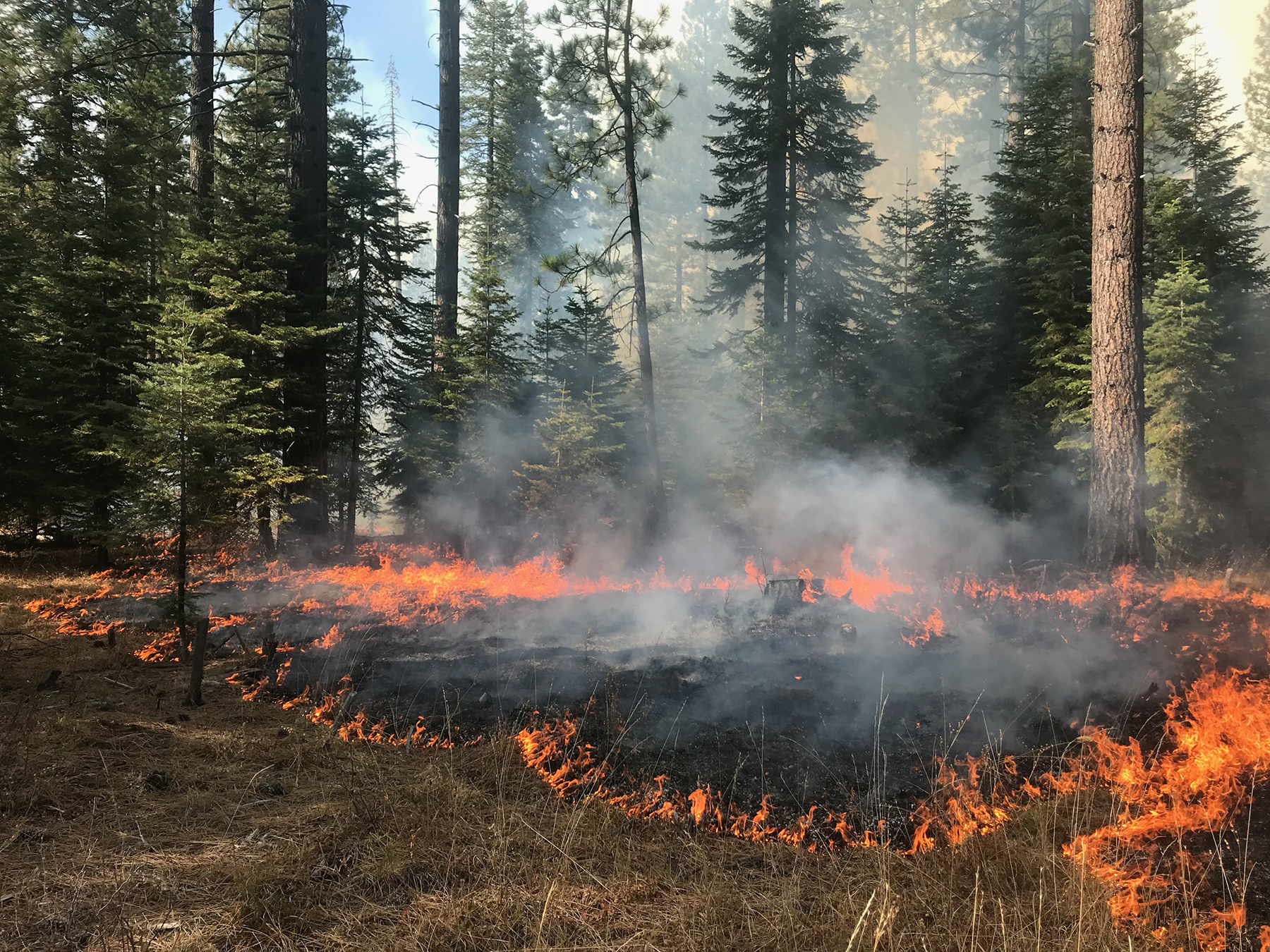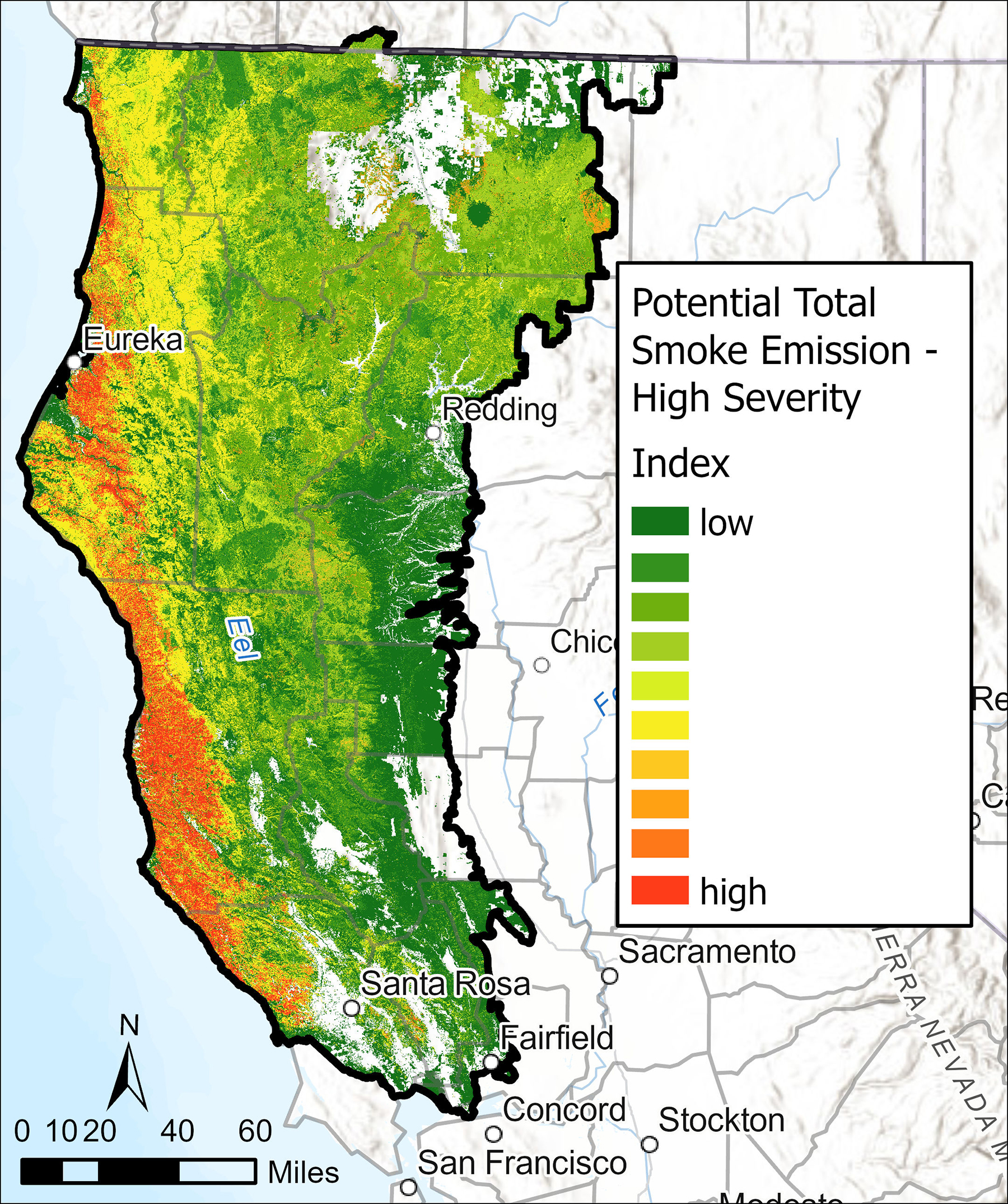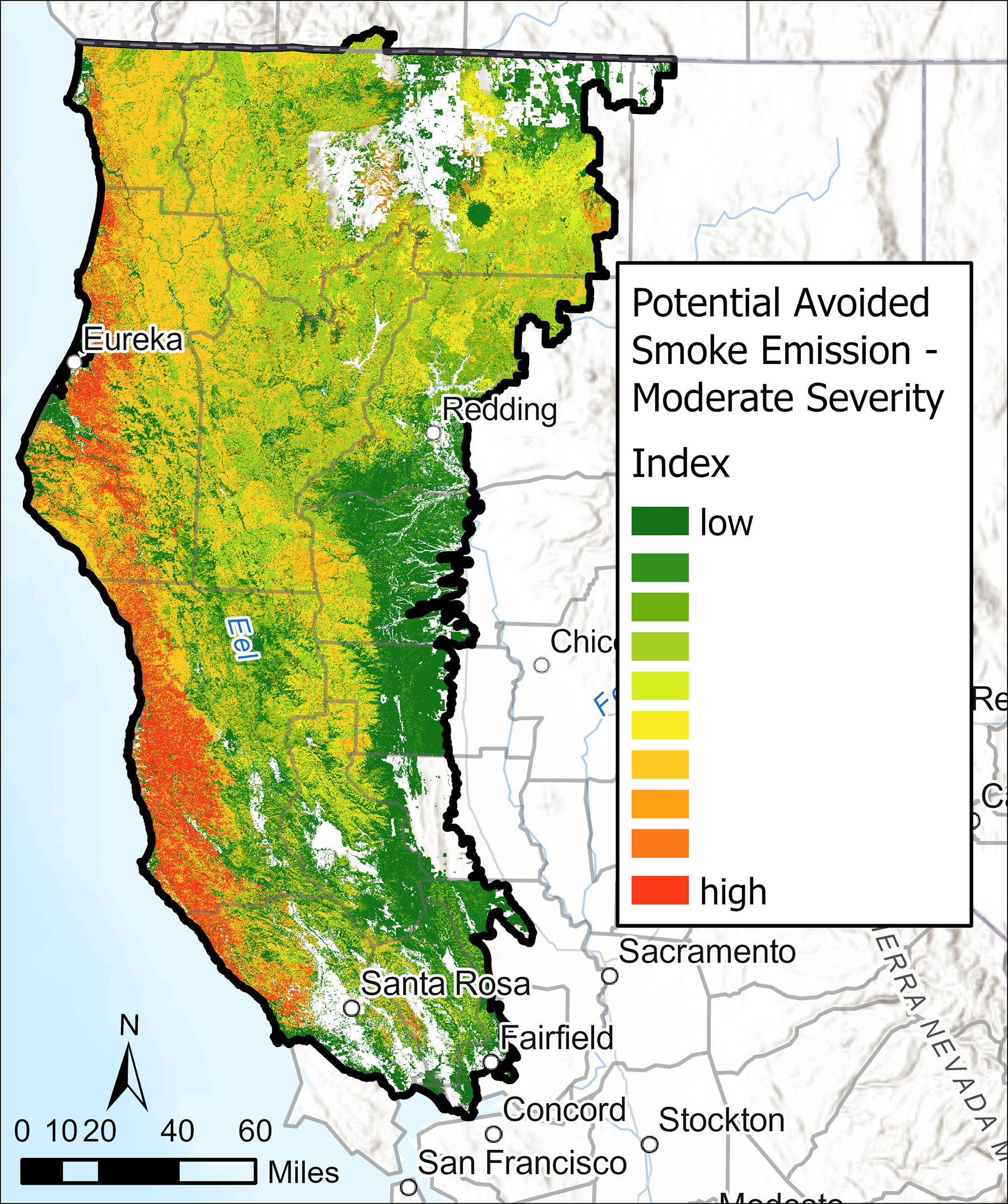Northern California Regional Profile
Air Quality

photo credit: Liz Young, U.S. Forest Service
Overview
In addition to the direct dangers that wildfire poses to communities, smoke from wildfires can also impact the health of people hundreds of miles away. For many communities in the Northern California region, persistent poor air quality has become an unwelcome new fixture of the summer season. Some communities located in valleys are especially burdened by smoke due to smoke from distant fires being trapped by the topography. Catastrophic wildfires in the region’s wildland urban interface emit acutely toxic pollutants by burning building structures, household materials, and vehicles, and thus pose more severe public health issues compared with wildfires in more remote and less populated areas.
Inhalable fine particulate matter (PM2.5) and other pollutants in smoke can exacerbate a range of respiratory and cardiovascular issues and even cause premature death. Black carbon (soot) produced by wildfires may be especially unhealthy; in addition to cardiovascular and respiratory diseases, evidence has linked it to increased risk of cancer, and potentially, birth defects. Certain populations are especially vulnerable to smoke, including outdoor workers, seniors, people with asthma, and children because they have a lower tolerance for elevated toxin concentrations. These are public health issues that disproportionately affect households that lack indoor air filtration systems or sufficient insulation to protect from toxins. Also, many socioeconomically disadvantaged communities in the region lack resources to improve air quality in public spaces, such as schools or community centers.
Expanding prescribed fire, as well as cultural burning, has been proposed as a strategy for reducing the risk of higher toxins from uncontrolled wildfires. Fires that burn at lower intensity over smaller areas emit fewer pollutants than large, high-severity wildfires. Fires that only burn vegetation also do not release the hazardous chemical emissions of fires that burn structures and vehicles. Additionally, prescribed burn organizers and local air districts can collaborate to minimize air quality impacts by planning burns to occur during optimal weather conditions and limit the duration communities may be exposed to smoke. They can also provide advanced public notice of planned burns so that nearby residents can take precautions to reduce smoke exposure and work with public health officials to notify and protect more susceptible individuals.
Some interviewees observed that many communities that have been exposed to the greater dangers of wildfire have become more enthusiastic about prescribed burning in their area. There is already a long tradition of private landowners burning for agricultural purposes in the region, which also has facilitated support for controlled burning as a solution for increasing resilience to wildfire. However, some communities that are burdened with persistent wildfire smoke do not want additional smoke from prescribed burning, and it can be difficult to build public hope that fuels reduction through prescribed burning can make a positive difference. Public education on the benefits of prescribed burning, as well as increasing capacity to alert communities when planned burns are occurring can help to grow public support.
Even when the public is supportive of prescribed burning and cultural burning, regulatory and logistical barriers may still impede planned burns from being implemented. Some stakeholders in the region feel that cultural burning should be exempt from air quality regulations and instead considered part of baseline air pollution and that there should be fewer air quality constraints on the use of prescribed burning, too. Similar to other regions, many stakeholders interviewed for this regional profile project expressed concern that regulations that are intended to protect the public from air pollution can paradoxically cause more harm by barring controlled burning but being unable to prevent catastrophic wildfires from igniting.
Stakeholder Perspectives

Survey respondents rated prescribed fire to reduce wildfire risk as the most important potential area of investment for achieving an outcome of clean air in the Northern California region. Public education on what to do during smoke events was also rated as extremely important. Reducing smoke induced public health impacts from prescribed fire was considered to be the least important potential area of investment in this category, further indicating that regional stakeholders who participated in this survey perceive prescribed burning to be an effective tool in the regional toolbox for increasing resilience to wildfire.
Resource Conditions


The Regional Resource Kit includes data on potential smoke emissions under high severity fire (top). This index is based on the fuel loads and fuel moisture of 30-meter areas, and it can be used to identify where within a region smoke emissions may be especially high during a high severity wildfire. Much of the Mendocino coast and northern Humboldt coast are predicted to have the highest smoke emissions during a high severity fire. The potential avoided smoke emission metric (bottom) estimates how much less smoke would be produced from a location burning at moderate, rather than high, severity. This index can indicate locations where it might be advantageous to allow fire to burn at lower severities, e.g., via prescribed burning, rather than risking a future wildfire burning under extreme conditions.
